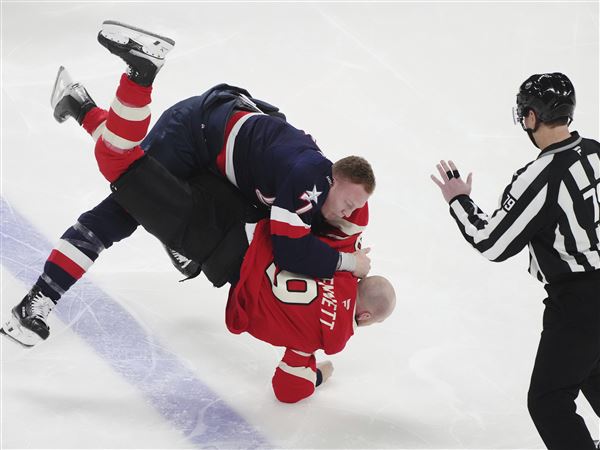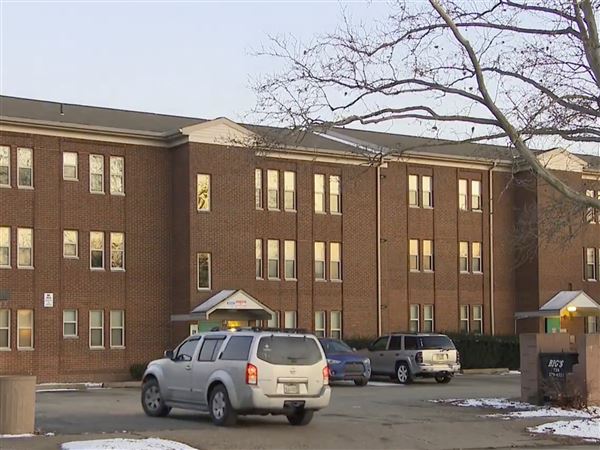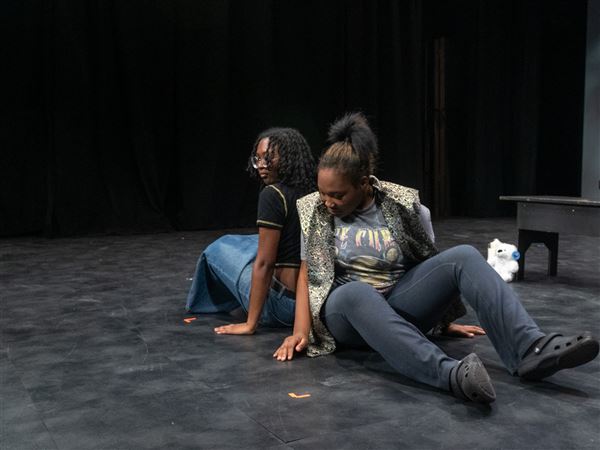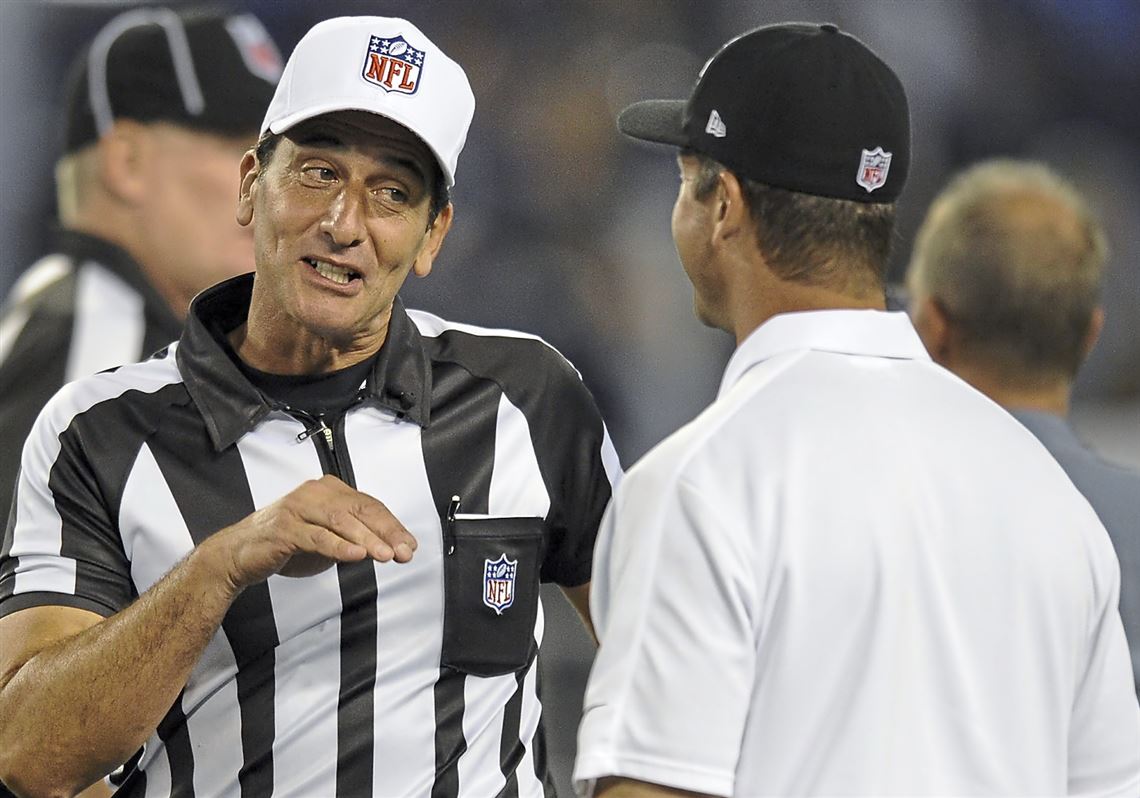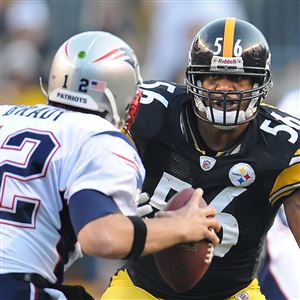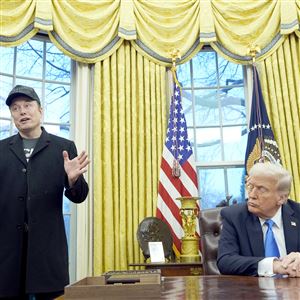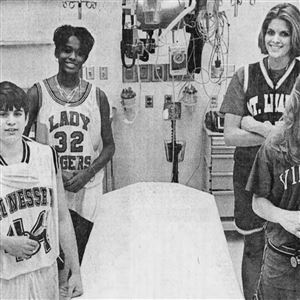Gene Steratore worked his first football game as an official 35 years ago in Erie, Pa. He earned a $22 paycheck to referee a junior varsity game in front of dozens. His final act as an official came on a slightly bigger stage.
Steratore was the referee in the 2018 Super Bowl in Minneapolis before 67,000 at U.S. Bank Stadium and more than 100 million television viewers worldwide.
After working thousands of games over the years — first in the WPIAL and later in some of nation’s most recognizable football and basketball venues — Steratore is hanging up his whistle and trading it in for a microphone.
Steratore retired from officiating last week and accepted a broadcasting job with CBS Sports. The network hired him to serve as rules analyst for its NFL and NCAA basketball broadcasts.
“It was 150, 160 days of being on the road a year,” Steratore said late last week from his home in Washington County. “It’s not easy, especially the basketball travel in the winter and the multiple games in multiple conferences. It was time to come home.”
The career change will allow Steratore, 55, to spend more time with his family while joining a growing fraternity of former NFL officials working in television.
Steratore joins Fox rules analysts Dean Blandino and Mike Pereira and ESPN’s Jeff Triplette in the television business. At CBS, Steratore replaces former NFL referee Mike Carey, whose contract was not renewed after the 2015 season.
Rules analysts are becoming an indispensable part of NFL broadcasts, and Steratore is entering his new job at a time when officials are criticized more than they ever have been. The NFL received weeks of bad publicity for its handling of the catch rule in the 2017 season. The rule was rewritten again in the offseason in hopes of decreasing controversial calls such as the one in the Steelers-New England Patriots game in December that took a touchdown away from tight end Jesse James after the ground caused the ball to move after he crossed the goal line.
But the catch rule might not be the most controversial rule of 2018. The NFL made striking an opponent with the helmet illegal, which could signal a fundamental change in how the game is played.
“The helmet rule will draw a lot of attention,” Steratore said. “I think the reason for that is the rule is still in the process of being interpreted to some extent. What will and what won’t be a foul? The public is aware that there will be some type of change, and I hope they understand the difficulty of interpreting those hits in real time.”
The new rule is pretty broad is its language and could be interpreted in a number of ways. In the NFL rule book it reads: “It is a foul if a player lowers his head to initiate and make contact with his helmet against an opponent.”
Steratore said the annual visits to training camps along with the preseason games will be vital this summer. Typically, officials visit every NFL camp for 2-3 days, go over new rules and points of emphases with coaches and players and work practices so players can get a feel for how they will be treated in the season.
“I think the big thing will be lowering the head and striking an opponent with the helmet,” Steratore said. “How do we interpret the word ‘striking’? Is a lineman in a three-point stance and coming out and hitting a defensive lineman in a four-point stance going to be called a foul? Where do we draw the line?”
Steratore said as long as players have guidelines to follow they are remarkably good at getting in line with new rules.
“The way these players adjust is just unbelievable,” he said. “It’s why they’re playing in this league. I think the thing they all want to know is where is the line? Tell us the technique and let us get to work on the technique and hone the technique. From an official’s standpoint, they’re really good at adjusting.”
Steratore worked thousands of football and basketball games over the years. His first assignment in the WPIAL was on a crew that worked games in the Mon Valley. He eventually worked his way up to working Class AAAA football and basketball games on Friday nights and small-college games Saturday. His first Division I basketball assignment came in 1997 when Mickey Crowley hired him to work as an official in the Atlantic 10 Conference. He later worked in the Big East as one of their primary officials and in other conferences.
Steratore’s big NFL break came in 2003 when Pereira, the league’s former vice president of officiating, hired him. He rose quickly through the NFL system and became a referee after just three years.
Steratore said he feels rejuvenated with the move to the broadcast booth, but he’ll hold tight onto the memories of his officiating days. One of his most memorable games was at Heinz Field. It was Sept. 29, 2008, a Monday night game between the Steelers and Baltimore Ravens that is famous for Ray Lewis breaking Rashard Mendenhall’s shoulder.
“It was one of the most physical regular-season football games I ever officiated,” Steratore said.
But it was more memorable for Steratore for another reason. He was getting ready to leave the Marriott downtown when he realized he left his referee’s hat at his home. He called home and had his kids chauffeur the hat down to the field. Miraculously, through rush-hour traffic on Interstate 79, it got there in time.
“It was an amazing game,” Steratore said. “The last play of the game there was a penalty and one of those 10-second runoff situations, so we go to commercial like the game is over. Well, during the commercial we collaborated and decided there should not be a 10-second runoff and we ran one more play. So we go to overtime. They don’t put coin tosses on TV except for in overtime. I flip the coin and the coin doesn’t flip. I’m out there with Hines Ward and Ray Lewis and [Terrell] Suggs might have been there. The coin didn’t flip; it was like a pizza crust in the air. Luckily for me, it bounced on the ground and rolled a couple of times. Well, the Ravens win the toss. I see Hines going over to the sidelines telling people the coin didn’t flip. I see [Larry] Foote and [James] Farrior going over to coach [Mike] Tomlin, and then he motions for me to come over. He said, ‘Gene, this hasn’t been your day. First you leave your hat on your bed and now this.’ “
A member of Steratore’s crew — perhaps his brother Tony or fellow Pittsburgher Tom Stabile — had told Tomlin of the hat fiasco. The Steelers won the game, 23-20, and went on to win Super Bowl XLIII later that season.
In retirement, Steratore will continue to help run Steratore Sanitary Supply, his day job for the past 30 years, in Eighty Four, Pa. He started the company with Tony in 1988. He also plans to visit some of the WPIAL venues where he got his start. Andrew Steratore, one of Gene’s three children, is a PIAA basketball official.
“It’ll be great to go back and sit in some of those old gyms and watch him work and see some of those old faces,” he said.
Ray Fittipaldo: rfittipaldo@post-gazette.com and Twitter @rayfitt1.
Our in-depth Steelers coverage is second to none.
Support quality journalism. Subscribe today.
First Published: July 3, 2018, 11:00 a.m.
